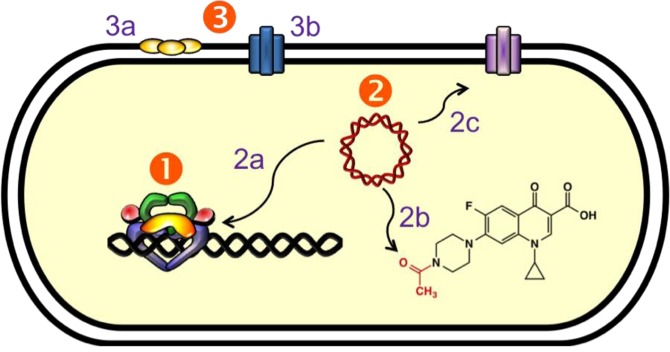Figure 6.

Mechanisms of quinolone resistance. (1) Target-mediated resistance. Mutations in gyrase and topoisomerase IV weaken quinolone–enzyme interactions. (2) Plasmid-mediated resistance. (2a) Qnr proteins (yellow) decrease topoisomerase–DNA binding and protect enzyme–DNA complexes from quinolones. (2b) Aac(6′)-Ib-cr is an aminoglycoside acetyltransferase that acetylates the free nitrogen on the C7 ring of ciprofloxacin and norfloxacin, decreasing their effectiveness. (2c) Plasmid-encoded efflux pumps decrease the concentration of quinolones in the cell. (3) Chromosome-mediated resistance. (3a) Underexpression of porins in Gram-negative species decreases drug uptake. (3b) Overexpression of chromosome-encoded efflux pumps decreases drug retention in the cell.
